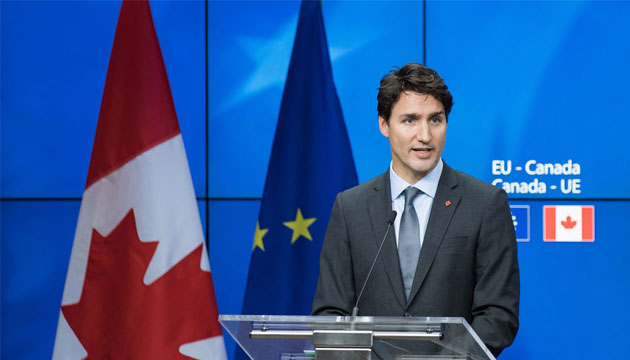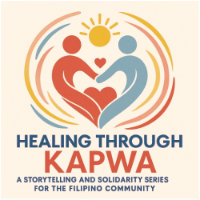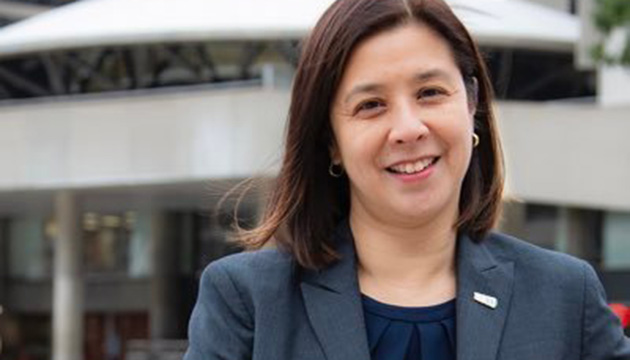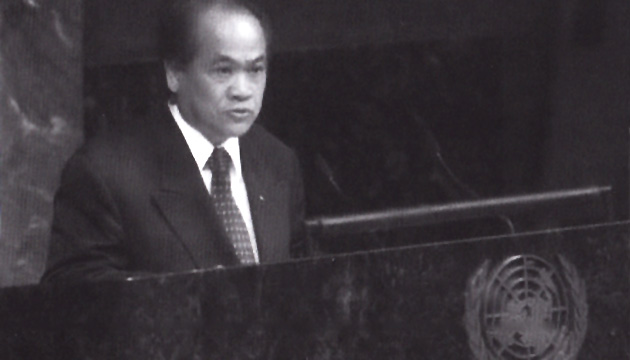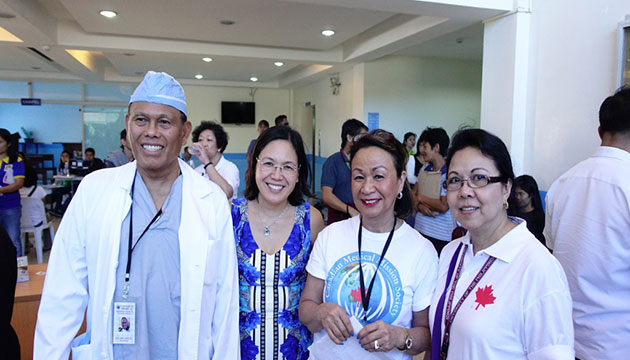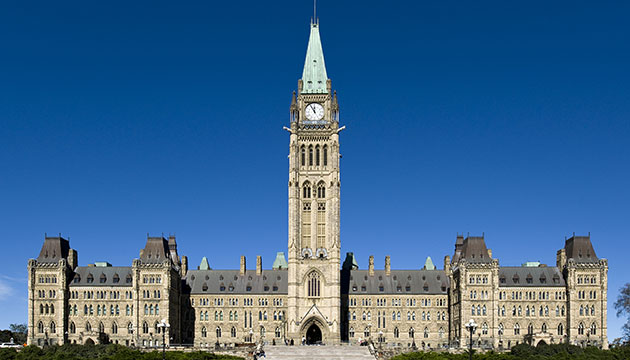Eleanor Guerrero-Campbell: November 4 this year marks the first-year anniversary of the federal government under the leadership of Prime Minister Justin Trudeau, who, a year ago, campaigned on their platform, “Strong Middle Class”.
In observance of the anniversary, Canadian Filipino Net has chosen to focus this month’s issue on how Canada has delivered on its immigration policy as promised in the election platform.
To assess the government’s performance, we sought the parliamentary insights of Dr. Rey D. Pagtakhan, the first-ever Canadian Filipino elected to Parliament and appointed cabinet minister in two prior Liberal federal governments. His parliamentary career spanned nearly 16 years, and he once chaired the House of Commons’ Standing Committee on Citizenship and Immigration.
We also asked one of our Board members Eleanor Laquian, who, with her husband Aprodicio Laquian (Founding chair of our Editorial Board) not long ago published the well-researched book Seeking a Better Life Abroad: A Study of Filipinos in Canada, 1957 to 2007 to give our readers a brief account of the transformative changes in the history of Canada’s immigration policy.
Eleanor R. Laquian: In the last 50 years, the process by which Canadians allow foreigners to settle in their country has undergone major transformations – from “white Canada forever” to multiculturalism – reflected in the Immigration Acts of 1952, 1976, and 2002. Each new law has opened the door a little wider for immigrants but not without resistance from militant doorkeepers opposed to non-European immigrants.
Unlike Australia, Canada never officially adopted a “white only” immigration policy although early in its history; it was not particularly welcoming to non-whites except for cheap labor to do hard work that Canadians did not want. In the 1800s, Chinese laborers were brought in to work on the railroads. People from India were recruited to work in agriculture. Japanese trades people were admitted as fishermen and craftsmen. The migrants were not always welcomed by certain white groups – whenever the migrant numbers increased too rapidly, there were explicitly racist reactions.
In 1907, there were anti-Chinese and anti-Japanese riots in Vancouver where the Asians were beaten up by white hooligans who also burned down their camps. In 1914, the SS Komagata Maru sailed from Hong Kong to Vancouver, carrying 376 passengers from Punjab, British India. The passengers were denied entry and the ship was forced to return to India. Many died on this trip. Some historians have concluded that “the history of Canada, rooted as it is in the two founding nations theory, has been characterized by explicit, systemic, and institutional racism”.
Through the years, however, Canada’s robust economic development, low fertility rate and need for more people to meet labor needs, created a more positive view of immigrants. In 1971, the federal government, under Liberal Prime Minister Pierre Elliot Trudeau, adopted its multiculturalism policy that recognizes and respects the diversity of its society in languages, customs, and religions. Canada then became the first country in the world to adopt multiculturalism as an official policy – a pan-Canadian value guaranteed in Section 27 of the Canadian Charter of Rights and Freedoms when it was enacted in 1982. Section 27 is referenced in the Canadian Multiculturalism Act that became law in 1988 during the leadership of Conservative Prime Minister Brian Mulroney.
Still, there remains a militant and vocal segment of the Canadian population that advocates a pragmatic policy based primarily on Canada’s manpower needs, not on humanitarian and nation-building ideals. Thus the Conservatives under the Harper government promoted the Temporary Foreign Workers Program, which squeezed all it could get from cheap laborers and then discarded them after four years to return to the poverty of their own country, older and wiser yet not better off than when they left. Many of these Conservative lawmakers were voted out of power in the fall of 2015 when the majority of Canadians believed the promises of a young rapidly rising Liberal political leader.
During the election campaign of 2015, the Liberal Party’s Justin Trudeau promised to bring back the “sunny ways” of his father’s government with reforms to bring about a kinder and humanitarian immigration policy.
Has he delivered on this?
Eleanor Guerrero-Campbell: Echoing Ms. Laquian, how would you go about scoring the present Government’s performance on its election pledge? How important is it for Canadians to ask and assess?
Rey D. Pagtakhan: Very important, indeed! Fulfilling an election promise is a crucial test of political integrity. It strengthens the citizenry’s faith in our parliamentary system of democracy. This is particularly true when the elected governing political party has the majority in parliament and, therefore, could be expected without legislative difficulties to adopt regulations, enact laws, and pass the needed budgetary appropriation to transform election promises made into performance done. At the same time, a majority government is well advised to welcome creative input from the public and constructive amendments from the opposition parties.
"Fulfilling an election promise is a crucial test of political integrity."
Demanding transparency and accountability from the government on its election platform is a win-win for all: elected officials, civil servants, and the general citizenry. Elected officials are continually reminded of their election promises and of their duty to fulfill them. Civil servants know in advance the expectations from the government and thereby are able to make adequate and timely planning in the development and delivery of programs. Citizens are fully informed and become more fully engaged with the affairs of the nation. Indeed, asking questions of the government and periodically assessing its performance in the office make for good governance.
To carefully and thoughtfully appraise the performance of the present Government on its election platform on immigration and citizenship, I re-read the election platform and viewed the specific commitments on this category against the priorities stipulated by the Prime Minister in his so-called Mandate Letter to the Minister of Immigration, Refugees and Citizenship and against the Speech from the Throne, which sets the goals of the Government for the duration of the parliamentary session, for concordance. At this juncture, I am awaiting the Minister’s reply to my request for the updated confirmation of what his office has implemented and/or planned of the priorities identified in the Mandate Letter and of any new initiatives not contained therein but he might have acted on.
EGC: Could you remind our readers of the specific commitments respecting immigration and citizenship?
RDP: The 2015 Liberal election platform pledged to deliver on a number of commitments related to immigration and citizenship and these have been grouped into seven headings:
1. Diversity in government
(a) reflect Canada’s diversity and include an equal number of women and men in cabinet; and
(b) adopt a new government-wide appointment process which will be based on merit;
2. Reuniting families
(a) immediately double the number of applications allowed for parents and grandparents, to 10,000 each year;
(b) nearly double the budget for processing family class sponsorship;
(c) provide more opportunities for applicants who have Canadian siblings by giving additional points under the Express Entry system;
(d) restore the maximum age for dependents to 22 from 19, to allow more Canadians to bring their children to Canada; and
(e) grant immediate permanent residency to new spouses entering Canada, eliminating the two-year waiting period.
3. International students and temporary residents
(a) give credit for time already spent in Canada;
(b) give residency time credit and thereby make it easier for them to become Canadian citizens; and
(c) reduce the barriers to immigration imposed on them ;
4. Remittances
(a) make more affordable for Canadian workers to send money overseas by working with Canada’s banks to ensure low-cost access to transfer services;
(b) impose tough new penalties on those who take advantage of vulnerable newcomers; and
(c) work with provincial and territorial governments to better regulate the remittance industry, so that residents of Canada who send money overseas to help family members are not gouged by high fees;
5. Hiring caregivers
(a) eliminate the $1,000 Labour Market Impact Assessment fee for Canadian families looking for caregivers to help family members with physical or mental disabilities; and
(b) work with the provinces and territories to develop a system of regulated companies to hire caregivers on behalf of families, thereby protecting caregivers by allowing them to change employers in the case of bad relations or abuse.
6. Syrian refugees
(a) expand Canada’s intake of refugees from Syria by 25,000 through immediate government sponsorship;
(b) work with private sponsors to accept even more; and
(c) invest $250 million, including $100 million this fiscal year, to increase refugee processing, as well as sponsorship and settlement services capacity in Canada.
7. Refugees
(a) restore Canada’s reputation and renew and expand our commitment to helping resettle more refugees, and deliver a refugee program that is safe, secure, and humane
Together, these commitments constitute just under seven percent of the overall election pledges when viewed from their headings, but approached a fifth of the total when looked at individually – certainly an ambitious litany of promises by any standard.
Capable of implementation? As alluded to in the introductory paragraph by Ms. Laquian, the Canadian electorate gave a majority nod to the present federal government. Thus, the federal government can expect to serve its traditional four-year term and it will always command the confidence of the House of Commons. This also means it can have the political courage to take on new initiatives beyond simply acting on the election promises. It is within this context that I have approached my performance appraisal of the government’s one year in office. Although ultimately it will be every citizen’s judgment, it is in this overall context that I base my continued optimism insofar as the future of Canada’s immigration and citizenship policy is concerned.


